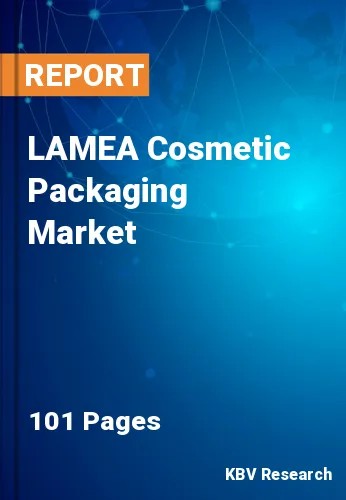The Latin America, Middle East and Africa Cosmetic Packaging Market would witness market growth of 7.4% CAGR during the forecast period (2022-2028).
Cosmetics contribute to a sense of well-being and a healthy way of life. Simple acts like handwashing with soap can help prevent serious sickness by carrying germs from polluted sources. Indeed, several studies have demonstrated that hand washing with soap can prevent the primary causes of child mortality in underdeveloped countries: diarrhea and respiratory illnesses. Toothpaste reduces the occurrence of dental cavities, especially when it contains fluoride. Plaque and tartar, which can cause tooth decay and gum disease, are reduced with toothpaste.
The Middle East and North Africa (MENA) region's beauty and personal care product sales recently reached $24 billion, with the United Arab Emirates (UAE) leading the way in terms of per capita spending. Over the last six years, the MENA area has been one of the fastest-growing global markets for beauty and personal care goods, coming in second after Latin America. This rise is particularly noticeable in the United Arab Emirates, where one out of every ten consumers spends at least $16,000 on cosmetic goods each year.
Fragrances dominated sales for beauty and personal care items in the Middle East and North Africa region, trailed by hair products, which accounted for 17% of total sales, and color cosmetics and skin care products, which tied for third place. According to projections, the sector will continue to grow, with annual sales exceeding $30 billion in the next four years. Strong tourism, a sophisticated retail scene, a growing youth population, high disposable income, and local customers' attention to personal hygiene and attractiveness are all factors contributing to the sector's rise. Premium and niche items are experiencing an upward trend as more consumers become solution-oriented, preferring solutions that address specific problems and provide clear benefits. This is due to the UAE's diversified lifestyle and worldwide brand exposure, which has resulted in a more informed consumer demographic.
The Brazil market dominated the LAMEA Cosmetic Packaging Market by Country in 2021, and would continue to be a dominant market till 2028; thereby, achieving a market value of $884.7 million by 2028. The Argentina market is anticipated to grow at a CAGR of 8% during (2022 - 2028). Additionally, The UAE market would showcase a CAGR of 7.1% during (2022 - 2028).
Based on Material Type, the market is segmented into Plastic, Glass, Metal, and Paper Based. Based on Application, the market is segmented into Skin Care, Hair Care, Perfume, Oral Care, and Others. Based on Packaging Type, the market is segmented into Bottles, Dispensers, Tubes, and Others. Based on countries, the market is segmented into Brazil, Argentina, UAE, Saudi Arabia, South Africa, Nigeria, and Rest of LAMEA.
Free Valuable Insights: The Global Cosmetic Packaging Market is Predict to reach $47.7 Billion by 2028, at a CAGR of 4.6%
The market research report covers the analysis of key stake holders of the market. Key companies profiled in the report include Albéa Group, HCP Packaging (Shanghai) Co. Ltd., TriMas Corporation, Graham Packaging Company, Amcor Plc, Sonoco Products Company, Huhtamaki Oyj, Berry Global Group, Inc., Aptar Group, Inc., and Gerresheimer AG.
By Material Type
By Application
By Packaging Type
By Country
Our team of dedicated experts can provide you with attractive expansion opportunities for your business.

